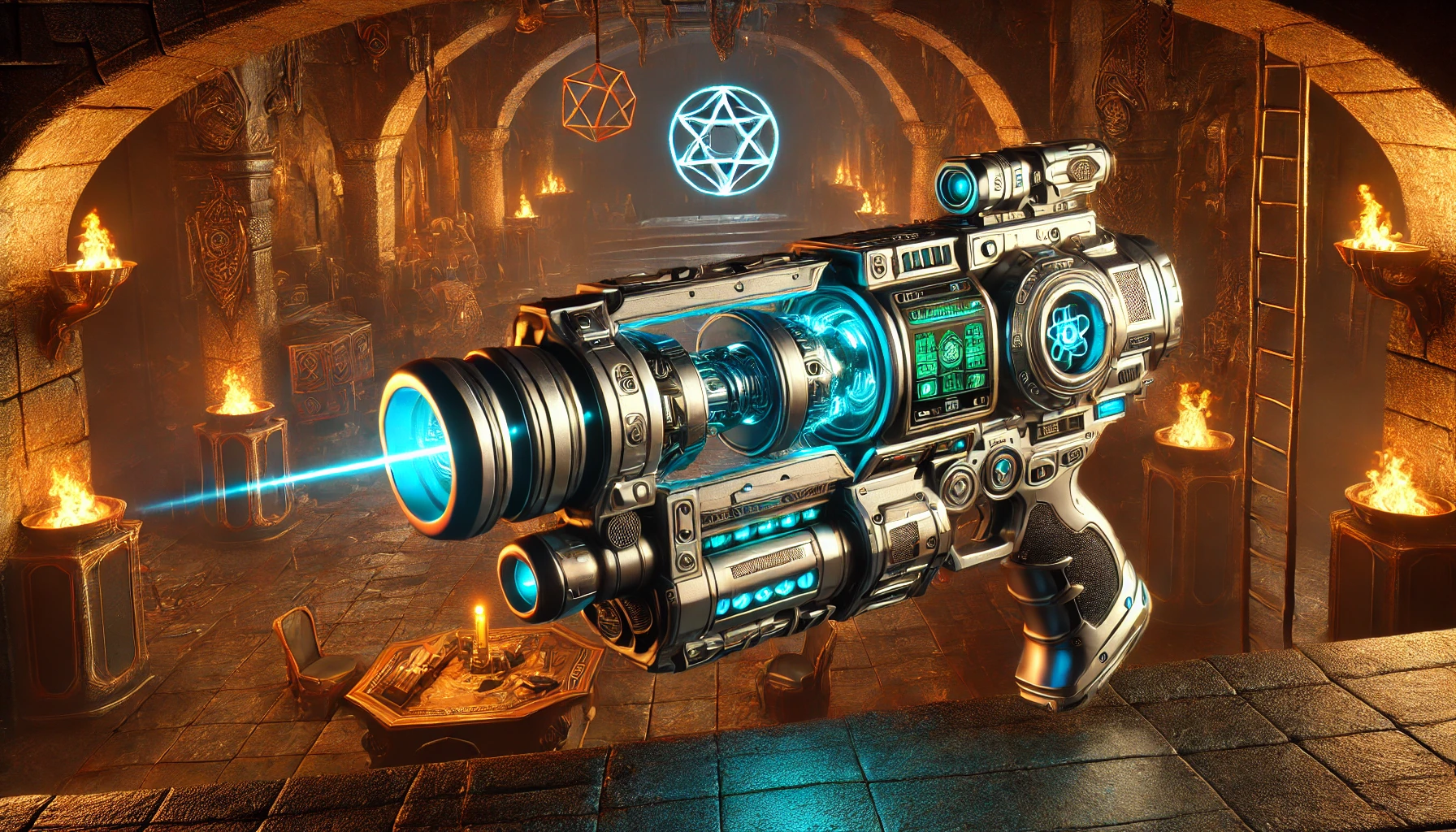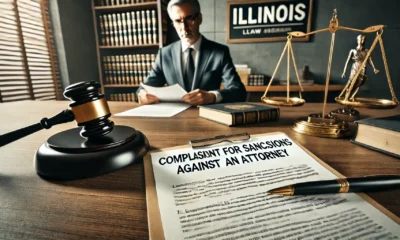Entertainment
5e Laser Guns: A Complete Guide to Futuristic Weapons in D&D

Introduction to Laser Guns in D&D 5e
Dungeons & Dragons 5th Edition (5e) is a fantasy role-playing game. It has swords, bows, and magic. But sometimes, Dungeon Masters (DMs) add something different—technology. Laser guns bring a sci-fi twist to the game. They are rare, powerful, and can change the way a battle plays out.
Laser guns in D&D 5e are not standard weapons. They are part of the Dungeon Master’s Guide (DMG) under futuristic items. These weapons do not fire bullets like regular guns. Instead, they shoot beams of energy. Unlike swords or arrows, laser guns deal radiant damage. This type of damage is usually linked to magic, making these weapons even more special.
Players might find laser guns in a crashed spaceship, an ancient ruin, or a hidden vault. Some DMs use them in homebrew campaigns with sci-fi elements. Others introduce them as lost artifacts from another world. Whatever the story, these weapons always feel unique.
Laser guns are not for every game. They can change the balance of a campaign. A group used to fighting goblins with swords might find laser guns too strong. But in the right setting, they can be an exciting addition. DMs should decide if these weapons fit their world before adding them.
For players, laser guns offer new ways to fight. They have long-range attacks and do not need strength to use. A wizard, rogue, or even a cleric can wield one. But these weapons come with challenges. Energy cells power them, and finding replacements is not easy. A laser gun without energy is just a fancy piece of metal.
Laser guns in 5e give players something different from classic weapons. They bring mystery, excitement, and danger. Whether found in a lost ruin or given by an alien traveler, these weapons add something special to the game.
Types of Laser Weapons
Laser guns in D&D 5e are advanced weapons. They do not use regular ammunition like arrows or bullets. Instead, they fire beams of pure energy. These weapons deal radiant damage, which makes them different from firearms. There are two main types: Laser Pistols and Laser Rifles. Each has its own strengths and weaknesses.
Laser Pistol
A laser pistol is a small, lightweight weapon. It is easy to carry and does not take up much space. This makes it a great choice for adventurers who want a futuristic weapon without extra bulk.
- Damage: 3d6 radiant
- Range: 40/120 feet
- Ammunition: Reload (50 shots per energy cell)
- Weight: 2 lbs
Advantages of a Laser Pistol:
✔️ Easy to carry: Small size means it fits in most gear setups.
✔️ Fast firing: More shots before reloading.
✔️ Great for stealth: A rogue or ranger can use this for quick, quiet attacks.
Disadvantages:
❌ Less powerful than a rifle: Deals lower damage.
❌ Shorter range: Not as effective for long-distance combat.
Laser Rifle
A laser rifle is larger and more powerful. It has a longer range and deals more damage, but it is also heavier and has fewer shots per energy cell.
- Damage: 3d8 radiant
- Range: 100/300 feet
- Ammunition: Reload (30 shots per energy cell)
- Weight: 7 lbs
Advantages of a Laser Rifle:
✔️ High damage: More power than a pistol.
✔️ Long range: Can hit enemies from far away.
✔️ Great for big battles: Perfect for ranged combat situations.
Disadvantages:
❌ Heavier than a pistol: Not as easy to carry.
❌ Fewer shots before reloading: Runs out of energy faster.
❌ Less effective in close combat: Harder to use in small spaces.
Choosing the Right Laser Weapon
Both the laser pistol and laser rifle are powerful, but the choice depends on the character and the situation. A rogue or bard might prefer a pistol for quick shots, while a fighter or ranger could use a rifle for ranged attacks. If a campaign has limited access to energy cells, players must decide whether a high-damage weapon with fewer shots or a lighter weapon with more shots is the better option.
Laser guns bring a new combat style to D&D 5e. Whether using a laser pistol for speed or a laser rifle for power, these weapons give players exciting ways to fight.
Mechanics and Properties of Laser Guns in D&D 5e
Laser guns in Dungeons & Dragons 5e work differently from traditional weapons. They do not use arrows or bullets. Instead, they rely on energy cells to fire beams of radiant energy. Understanding how these weapons function is important for both players and Dungeon Masters (DMs).
Ammunition: Energy Cells
Laser guns use energy cells instead of traditional ammunition. These cells act as batteries that power the weapon.
- Each energy cell has a limited number of shots before it is depleted.
- Once used, the energy cell is destroyed and cannot be refilled.
- Finding replacement energy cells can be a challenge. DMs decide how rare they are.
This makes resource management a key part of using laser guns. Players must think carefully before using too many shots in battle.
Reload Property
Laser guns do not have infinite shots. Each weapon has a set number of shots before it runs out of energy.
- Laser Pistol: 50 shots per energy cell
- Laser Rifle: 30 shots per energy cell
Once all shots are fired, the player must reload using a new energy cell.
- Reloading can be done as an action or a bonus action (DM’s discretion).
- If a character has no spare energy cells, the weapon becomes useless until more are found.
This makes planning ahead important. Running out of energy in the middle of a fight can be dangerous.
Burst Fire (Optional Rule for Laser Rifles)
Some DMs allow burst fire, which lets a laser rifle fire in a wide area instead of targeting a single enemy.
- The wielder sprays a 10-foot-cube area within range.
- All creatures inside the area must make a DC 15 Dexterity saving throw.
- On a failed save, they take full damage (determined by the DM).
- On a successful save, they take half damage.
Pros of Burst Fire:
✔️ Hits multiple enemies at once.
✔️ Great for crowd control in large fights.
Cons of Burst Fire:
❌ Uses more ammunition per attack.
❌ Less accurate than single shots (targets can dodge).
How These Mechanics Affect Gameplay
Laser guns in D&D 5e offer exciting combat options but come with trade-offs.
- They have high damage, but energy cells are limited.
- Reloading takes time and must be planned.
- Burst fire can hit multiple enemies, but wastes ammo if not used carefully.
These mechanics make laser guns feel different from swords, bows, or regular firearms. They bring a futuristic, high-tech element to any campaign. Players who find or wield these weapons must think tactically and manage their resources wisely.
Integrating Laser Guns into Your Campaign
Laser guns in D&D 5e are not standard weapons. They are considered futuristic technology, which makes them rare and unique in most settings. A Dungeon Master (DM) must decide how and when to introduce them. If used well, these weapons can add mystery, excitement, and strategic depth to a campaign.
Availability and Rarity
Laser guns should not be common in most fantasy settings. They are powerful and can change the way players approach combat. A DM must decide whether these weapons exist in their world and how players can find them.
Ways to Introduce Laser Guns in a Campaign:
✔️ Lost Technology: A crashed spaceship or an ancient ruin could hold forgotten laser weapons.
✔️ Divine or Arcane Gift: A god or powerful wizard may grant a laser gun to a chosen hero.
✔️ Interdimensional Travel: A portal to another world could introduce futuristic technology.
✔️ Enemy Loot: A strange invader from another realm may carry a laser rifle.
✔️ Secret Organization: A hidden group of scientists or warlocks might have discovered this technology.
Since these weapons are not magical, a DM can decide whether detect magic reveals their presence. Identify might explain how they work, but it would not describe them as magical items.
Balancing Considerations
Laser guns are strong weapons. They deal radiant damage, which very few creatures resist. Because of this, a DM must adjust encounters to keep the game balanced.
Possible Game Balance Adjustments:
✔️ Limited Ammunition: Energy cells are rare, so players must manage their shots carefully.
✔️ Recharge Requirements: The weapon may need time to recharge, reducing rapid fire.
✔️ Weapon Breakdowns: A laser gun might overheat or malfunction if overused.
✔️ Stronger Enemies: Introduce enemies with resistance to radiant damage or better defenses.
✔️ Moral Dilemmas: A laser gun could attract powerful factions who want it for themselves.
A DM must also consider player expectations. If a player finds a laser gun, they will likely want to keep using it. If the campaign is medieval fantasy, having futuristic weapons may feel out of place. DMs should be clear about whether laser guns are a one-time special item or a long-term part of the campaign.
Making Laser Guns Feel Unique
Laser guns in D&D 5e should feel different from other weapons. Here are ways to make them memorable and fun:
✔️ Custom Sound Effects: Describe how the weapon hums or glows when fired.
✔️ Energy-Based Mechanics: Allow creative uses, like cutting through doors or lighting up dark areas.
✔️ Reputation and Consequences: Owning a laser gun might make players targets for thieves or scholars.
✔️ Strange Side Effects: The weapon may have unknown properties, like causing hallucinations or attracting magical creatures.
Laser guns are a great tool for DMs looking to add something new and exciting to their game. When balanced properly, they provide powerful options without breaking the game. Whether used for a single quest or as part of a sci-fi fantasy mix, these weapons can create memorable moments for players.
Crafting and Infusing Laser Weapons in D&D 5e
Laser guns in Dungeons & Dragons 5e are rare, high-tech weapons. Unlike swords or bows, they are not easily crafted using standard blacksmithing. These weapons require advanced knowledge, rare materials, and energy-based technology. The Artificer class is the most suited for working with laser guns, but DMs must decide if crafting them is possible in their world.
Artificer Class and Laser Guns
The Artificer is a class known for tinkering, enchanting, and inventing. If any character can study, modify, or craft a laser pistol or laser rifle, it would be an artificer. However, since laser guns are not magical, they do not function like traditional enchanted weapons.
Possibilities for Crafting Laser Pistols
✔️ Reverse Engineering: An artificer could study a broken laser gun and attempt to build a working model.
✔️ Combining Magic and Technology: Infusing arcane energy with a mechanical frame could result in a hybrid weapon.
✔️ Power Source Experimentation: Instead of energy cells, an artificer may try using gemstones, arcane batteries, or elemental cores to power a laser gun.
Infusion Options and Limitations
The Infuse Item feature allows an artificer to add magical properties to weapons. Since laser guns are not inherently magical, infusions may have limited effects. Some possible infusions include:
- Enhanced Weapon: +1 to attack and damage rolls.
- Repeating Shot: No need for energy cells, but the gun recharges slower.
- Radiant Conversion: Changes the damage type to force, fire, or lightning instead of radiant.
- Overcharged Barrel: Allows a laser gun to deal extra damage once per long rest, but risks overheating.
Since artificers do not usually work with futuristic weapons, a DM may require special research, rare components, or story-based quests before allowing infusions on laser guns.
Crafting Challenges
Crafting a laser weapon is not the same as forging a sword. These weapons require technology, energy sources, and precision. A DM should set reasonable challenges to make crafting a laser gun feel rewarding but not too easy.
Resource Requirements
A player cannot simply visit a blacksmith to make a laser gun. Instead, crafting one may require:
✔️ Rare Materials: High-quality metals, energy crystals, or alien alloys.
✔️ Blueprints or Knowledge: A character must study how laser technology works before crafting.
✔️ Specialized Tools: Tinkering kits, alchemist supplies, or even an entire lab.
✔️ Time and Effort: Crafting a working laser gun should take days or weeks, depending on complexity.
DM’s Role in Facilitating Crafting
A Dungeon Master should decide how difficult it is to craft a laser gun. Here are some ways a DM can make crafting feel rewarding:
✔️ Side Quests for Materials: The party must find a rare energy core hidden in a ruined city.
✔️ Expert NPCs: A scientist, mage, or tinkerer might help the player understand laser technology.
✔️ Experimental Failures: The first few attempts at building a laser gun might fail or have unintended effects.
✔️ Customization Options: Allow players to modify or upgrade their laser gun over time.
If crafting is too easy, players may mass-produce laser weapons, disrupting game balance. A DM should control access to resources to keep laser guns rare and exciting.
Crafting laser guns in D&D 5e is a complex but rewarding challenge. While standard blacksmiths cannot make these weapons, an Artificer or highly skilled tinkerer might succeed with the right knowledge, tools, and rare components. DMs should balance the difficulty of crafting to keep the game fun and engaging.
Allowing players to study, modify, and upgrade laser guns makes these weapons feel more alive and unique in the game world. Whether a character discovers lost technology or experiments with arcane science, crafting a laser gun can be one of the most exciting projects in a campaign.
Role-Playing and Narrative Opportunities
Laser guns in D&D 5e are not just powerful weapons; they also create exciting storytelling moments. Since they are uncommon in most fantasy worlds, introducing them can lead to mystery, discovery, and character growth. A Dungeon Master (DM) can use laser guns to spark quests, introduce new factions, or create moral dilemmas. Players can explore how their characters react to futuristic technology and what it means for the world they live in.
Story Hooks Involving Laser Guns
Since laser weapons do not naturally exist in most D&D settings, their appearance should have meaningful consequences. A DM can use them to build a unique storyline that keeps players engaged.
Quests Centered Around Acquiring or Mastering Laser Weapons
✔️ Lost Technology: The party finds a ruined spaceship buried deep underground. Inside, strange metal devices (laser guns) remain untouched for centuries. Who built them? Why was the ship buried?
✔️ Artifact of Power: A powerful enemy faction seeks to unlock the secrets of laser weapons. The party must decide whether to stop them or claim the weapons for themselves.
✔️ Alien Visitor: A mysterious being arrives with a laser gun and warns of a great danger approaching. The players must earn their trust to learn how to use these weapons.
✔️ City of the Future: Deep in the wilderness, an isolated city thrives with lost technology. The people there use laser guns for defense, but their energy supply is running low. Should the party help them or take the weapons for themselves?
✔️ A Mad Inventor’s Creation: A brilliant wizard or artificer claims to have developed the ultimate weapon—a magic-infused laser rifle. The party must determine whether the invention is a blessing or a curse.
Each of these hooks gives laser guns an important role in the story rather than just being a random weapon in a loot chest.
Character Development: How Characters Might React to Advanced Technology
Laser guns are unlike anything most D&D characters have seen. Their origin, mechanics, and effects can make characters question what they know about magic, science, and the world itself.
Ways Characters Might React to Laser Guns
✔️ The Scholar’s Curiosity: A wizard or artificer may see laser guns as a new puzzle to solve, trying to understand how they work and whether they can be replicated or modified.
✔️ The Warrior’s Doubt: A fighter or barbarian who relies on strength and skill may distrust a weapon that requires no physical training to use.
✔️ The Cleric’s Dilemma: A priest or paladin may wonder if radiant energy from a laser gun is the same as holy light or if it is something unnatural.
✔️ The Rogue’s Advantage: A thief or assassin might see laser guns as the perfect silent weapon—no arrows, no gunpowder, just pure energy.
✔️ The Commoner’s Fear: If the party reveals laser weapons to the public, people might see them as dangerous, unholy, or a threat to traditional power structures.
Role-Playing Opportunities with Laser Guns
Laser guns can do more than just change combat; they can shape how a world reacts to new technology.
✔️ Moral Dilemmas: Should a kingdom be allowed to mass-produce laser guns? What if it leads to war?
✔️ Scientific Discovery: Can laser guns be reverse-engineered? Should a character devote their life to understanding them?
✔️ Religious Conflict: If laser guns use radiant energy, do they challenge the beliefs of clerics, druids, or monks?
✔️ Faction Wars: Who else wants these weapons? Secret societies, military groups, or rival adventurers?
A DM can use these themes to make laser guns more than just weapons. Instead, they become a source of discovery, power struggles, and moral choices.
Laser guns in D&D 5e are more than just cool items; they reshape the world around them. Players and DMs can use them to build entire storylines—from hunting lost technology to deciding who should control these powerful weapons. The way characters react to and use laser guns can lead to some of the most memorable moments in a campaign.
Conclusion
Laser guns in D&D 5e are rare, powerful, and full of storytelling potential. They offer unique combat mechanics, require careful ammunition management, and can dramatically shift the balance of a campaign. Whether found in ancient ruins, gifted by mysterious beings, or crafted through arcane science, these weapons provide both tactical advantages and rich role-playing opportunities.
Dungeon Masters and players should integrate laser guns thoughtfully, ensuring they fit the world and enhance the game’s experience. With the right balance, these futuristic weapons can create exciting quests, deep character development, and unforgettable moments at the table.
Thank you for visiting our blog! If you enjoyed this post, feel free to check out more interesting and helpful content here.
-

 Law & Personal Injury6 days ago
Law & Personal Injury6 days agoHow to File a Sample Complaint for Sanctions Against an Attorney in Illinois
-

 Fashion1 week ago
Fashion1 week agoWhat are the Differences Between Microlocs vs Sisterlocks?
-

 Entertainment6 days ago
Entertainment6 days agoKamryan Randolph Wrestling: The Journey of a Rising Star in Sports
-

 Entertainment1 week ago
Entertainment1 week agoAura of Vitality 5e: A Complete Guide to Healing and Support in Combat
















